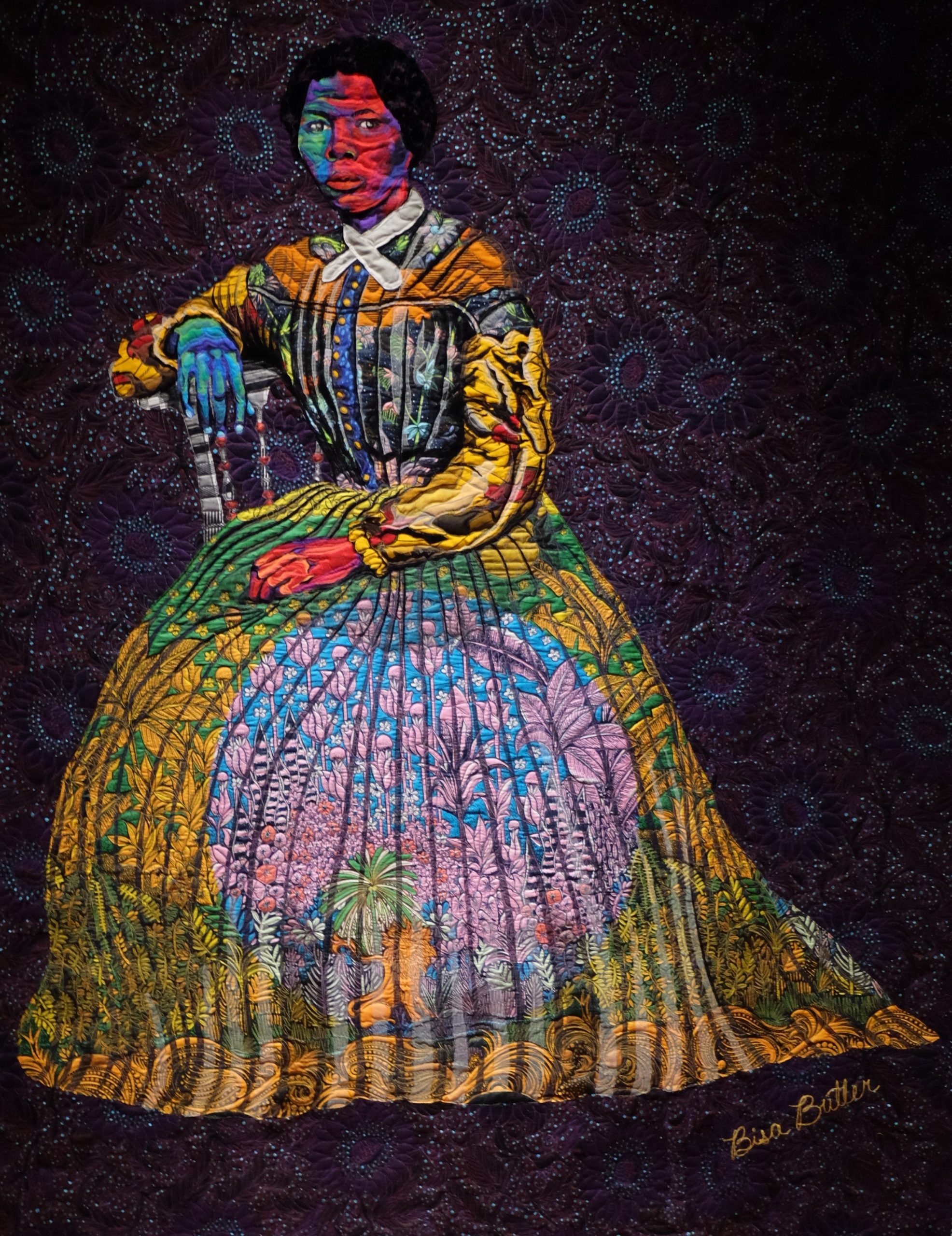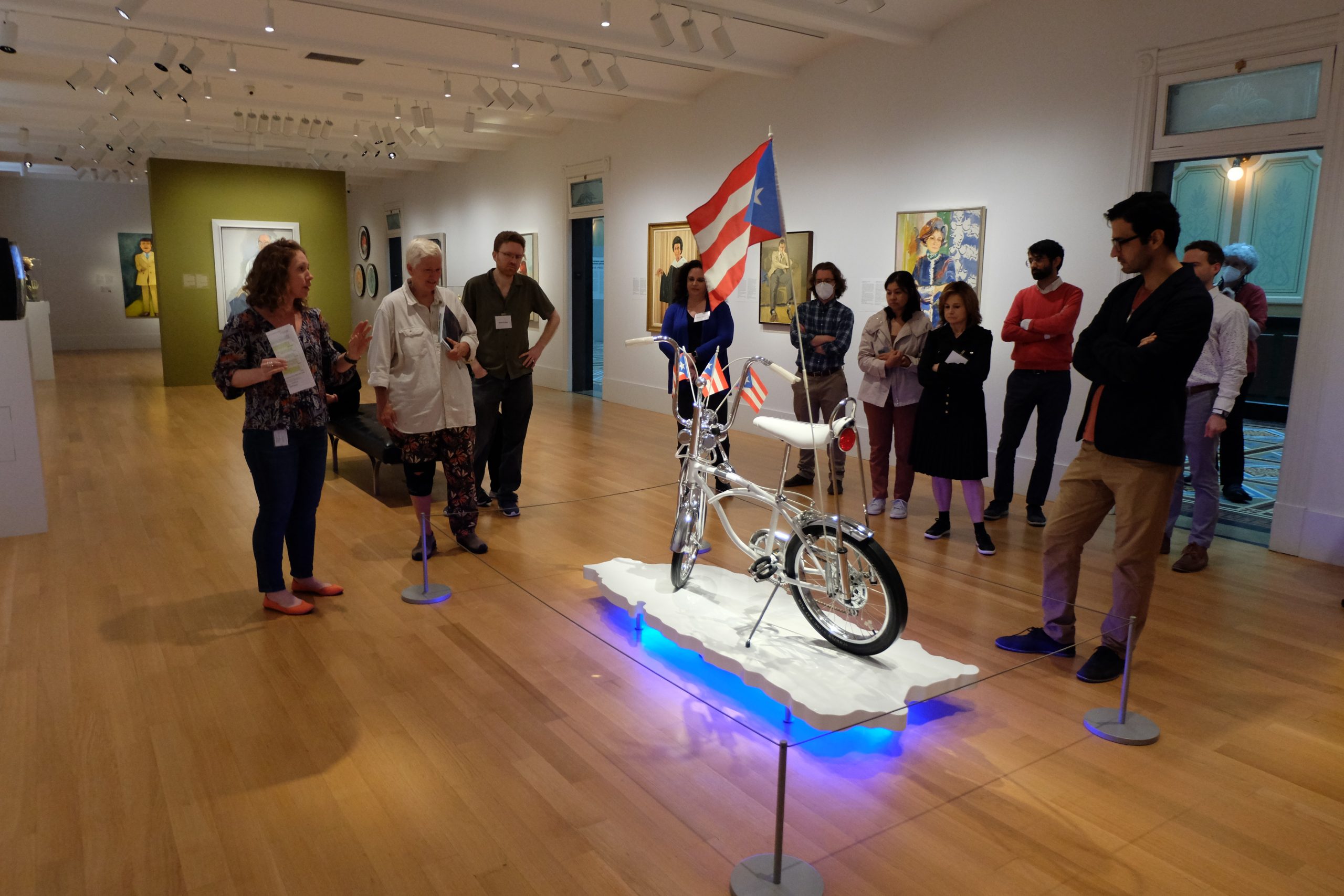When I last visited the National Museum of African American History and Culture, I started…
Amanda Lebleu,
Associate Professor, English Language for Academic Purposes
On a chilly but sunny October day, I had the pleasure of doing something I had not done in years: I got to look my students in the eye, face to face, without the barrier of a computer screen. My heart was pounding as I walked into the Silver Spring metro station and saw two women with their backs slightly turned, leaning in towards the metro card dispenser as they tried to read the directions to figure out how to buy a ticket for the train. I recognized them right away, for they were students in my ELAI 990 class at Montgomery College. We had planned to travel together that day to the National Portrait Gallery, along with a few other students who lived nearby, and we would meet the rest of the class at the museum.
These two women and I had been in my class for the first time in Fall 2021. That semester, we had met multiple times per week for fifteen straight weeks, in Zoom sessions for class as well as individually in virtual office hours. They had registered for my ELAI 990 course together in the Fall 2022. I not only knew them as students but also as people, women my age with full lives outside of school—I knew about their jobs, their co-workers and bosses, and their families—children with broken bones, elderly parents in the hospital, teenagers in high school. I had even met many of their children over the years, as they introduced themselves across the computer. Of all my students, I probably felt most comfortable and connected to these two, but now, here they were, just feet away, and suddenly I felt nervous, almost shy.
I found myself slipping into my role, the one I had played for the past year as their teacher, and after big hugs and lots of excitement, I helped them to figure out how to do what needed to get done—in this case, finding someone to help them purchase a Metro card. In the meantime, other students started to show up, and there were excited embraces and fist pumps all around, as the students and I experienced the somewhat awkward but completely delightful experience of finally meeting one another for real.
This experience was repeated again and again that morning, as our small circle began to expand, greeting more students outside of the Gallery Place/Chinatown metro, then again in front of the museum, and finally inside at our first stop, the “Block By Block: Naming Washington” exhibit. Although two students had to work and one was a week away from giving birth to her first child, the sixteen remaining students in my class all showed up to the museum that day. Our visit was a bit chaotic—we were late leaving the Metro in Silver Spring after missing the train to wait for a student on his way, and students who had planned to meet at the Gallery Place metro weren’t sure what to do when we didn’t arrive on time. One student found herself inside the wrong museum before getting in touch and making her way to the Portrait Gallery, and the only student to arrive at our designated meeting place inside the museum had already finished her visit to our first exhibit by the time I arrived with many of her peers. Poor directions on my part also led students to the top floor of the museum, where they spent time in an exhibit that was not on our list. I am a meticulous planner, and these mishaps would normally have caused me a great deal of stress. However, any frustration I may have felt never had a chance when competing with the thrill of being with my students in one of my favorite museums. I observed my students standing together, discussing what they saw in a photograph they’d written an essay about in class. I spoke at length to a student and her husband, who had visited the Portrait Gallery frequently and had a great deal of knowledge to share. Most importantly, I was able to see exhibits I’d visited several times through new eyes as I watched my students take in the experience and share their observations and questions.
As a teacher, I discovered lessons about organizing this kind of an experience that could only be gleaned by experiencing it. Students could have spent more time looking deeply at some of the artwork in the gallery if they’d been better prepared. We had practiced analyzing art, but making the leap from the classroom to the museum was not as straightforward as I’d imagined. Students could have taken fewer photos of the artwork and written more notes. I could have given everyone a much earlier meetup time, offering the stragglers the opportunity to still make it to our meetup spot online. These are only some of the many things I could have done differently. But the beauty of teaching is the opportunity to try again–to refine an assignment, knowing it will turn out even better than the first time. I know that I will continue to improve on what I did this semester. What I will not do, and cannot do, is to re-capture the thrill of seeing my students in person for the first time after years of virtual teaching, and I will always remember our visit to the National Portrait Gallery and the Smithsonian Fellowship as the catalyst for making this happen.





This Post Has 0 Comments